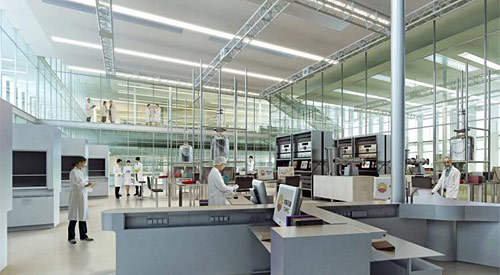It doesn’t really help if the Design Research debate is polarised between practitioners, bewildered by the fact that their project outcomes are not considered research, and academics, from within and without the discipline, who say that such outcomes are “not real research.” The area is fraught with ambiguity and emotion. This is the same for both the practitioner “just doing it” and the academic trying to fit into university research metrics.
After I blogged about Design Research last time I offered up a few definitions. A few further definitions of Design Research which I came across rang true in this article. And at the, now infamous, RIBA Research Symposia of 2007 it was reiterated that ‘“Research” for the purpose of the UK’s University Research Assessment Exercise was:
OMG! That sounds like from the above definition that Design Research is in fact actual Research with a capital R! (regular followers will know what I mean: but, sometimes, I really wonder if I am living in a research coal mine).
My ironic tone above is because, some still think Design Research is “not real research.” When I hear such things, I think architects are actually on the right track in order to elicit such doctrinaire reactions. So here are few quick ideas, and by no means definitive, for how practitioners, might strengthen, that most dangerous, impure and evil of things, Design Research.
1. Consider how the research fills or pursue a gap in architectural knowledge?
Ok, just going out and designing something is not really Design Research unless you can show or demonstrate that you are seeking new knowledge. Perhaps, you are seeking to develop a new fabrication technique, or designing a building type that other people have not designed before, or designing an existing building typology with a different design approach.
But to do all this you have to know what knowledge has been previously created. What are the relevant design contexts, projects, or techniques being the reference points for this new design project? What new ideas are you trying to test or explore? How is this new Design Research positioned in relation to the canon of architectural knowledge that already exists?
2. Develop a catalogue of projects which the Design Research can refer to.
It follows from above that you need to have a catalogue of either, the projects you have done before, or projects you are interested in. This information can come in different formats: In books, (yes, strange but true), or in some kind of data storage. This information could also be in your brain. But, it’s probably best if it is explicit rather than tacit.
One practice I know produces an in-house research books or file for each new project in the office. This contains a range of things.
3. Develop a Design Research methodology.
A methodology is not a method. Don’t be confused. Understand this and everyone will think you are a Design Research guru.
Methodology was once described to me as, the arguments for the way, or manner, that the research is being pursued. This is the same for Design Research. Why is the Design Research being pursued or approached in a particular manner?
What kinds of design activities or processes are involved in the design investigation and research? For example, is it master planning, or spatial planning or is it something about materials or light or maybe it’s something about form making and coding.
You need to be able to argue, and think about, why the particular type of design processes you have chosen is appropriate to what you are trying to investigate. The resulting argument is your methodology.
3. Are new methods of designing or making involved?
This is probably an easy question to answer. But, that is perhaps the problem. Just getting out the robots or 3D printer and making something anew doesn’t make it Design Research.
All too often is it easy to be seduced by the technologies of making. It is all too easy to think that, superficial objectness or aesthetic funkiness alone means that what you are doing is in fact Design Research. All because you are designing something new (and oh-so-organic and diatomic) doesn’t necessarily mean that the thought behind it is new.
Are there steps in the process that make it unique? For example, employing or developing, anew plug-in, a new algorithm, a new geometric regime, unique patterns of design iteration.
Is the design research exploring a new or existing technology and its relationship to design process itself? How is the technology, shaping or changing the way that architects design?
Taken together how do the different methods employed in the Design Research support the methodology?
4. Does it develop or add to new theories of architectural design?
Architects should ask does the design research, or the design itself, build or develop a new theory of how architecture is made?
With fellow students, I once went to a presentation by an architect of a large and prominent downtown high-rise office building. We asked the architect how he came to make the forms he was proposing. He stated these had come about as result of “whatever just came into his head.” We were aghast.
The mysticism associated with so-called “intuitive” design has often led to the situation where any theoretical scrutiny of architectural design is greeted with ignorance, and even hostility. For some architect’s theory is always going to be bullshit.
As architects, no matter the type of work we do we have responsible to develop theories that explain and argue the general relevance of what we are doing. Is there a body of theory around your firm’s design practices?
Testing theory and building new theories is an essential part of the outcome any ongoing research. As Design Research generates new design solutions how does it help to formulate guide, or determine a theoretical framework.
5. Finally, has Design Knowledge been added to?
This is the key question. Can the architect argue that new Design Knowledge has been created? How strong is this argument? Do the foundations of this argument simply rest on intuitive designing. Or is there a logical substance to the argument based on a clear aim to fill a knowledge gap, sound documentation, a supporting methodology, established or unique methods and a new theoretical framework?
Understanding and promoting Design Research in architecture as a discipline is essential to the disciplines viability. For architect’s attitudes to Design Research need to be clearer and less contaminated by the twin evils of academic prejudice, about what research is, and the theory free zone of intuitive alpha-male designing.






